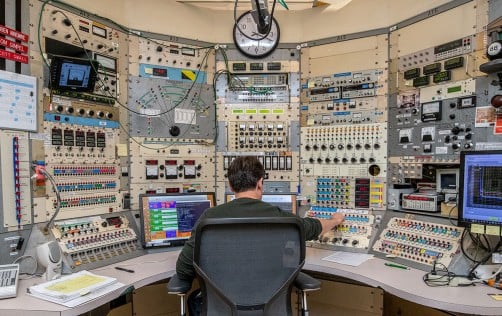At the Department of Energy’s Lawrence Berkeley National Laboratory, the 88-Inch Cyclotron stands as a formidable machine, accelerating ions to delve into the mysteries of the atomic nucleus. For decades, it has been instrumental in helping scientists understand the building blocks of matter. Yet, beyond its primary role, this cyclotron serves as an essential testbed for electronics, materials, and medical isotopes, influencing a wide array of technological advancements.
The 88-Inch Cyclotron delivers beams of charged particles with adjustable energies and compositions, playing a crucial role in advancing energy technologies, enhancing spacecraft resilience, and improving cancer treatments. Collaborating with companies, universities, and government entities, the cyclotron has significantly contributed to making modern technology more reliable and revolutionary.
Ensuring Sturdy Satellites for GPS
One of the cyclotron’s pivotal roles is in testing electronic components, such as microchips and circuit boards, to ensure they can withstand harsh environments. These efforts are concentrated at the Berkeley Accelerator Space Effects (BASE) Facility, which can simulate years of space radiation exposure in mere hours. Since pioneering heavy ion testing in 1979, researchers have utilized the cyclotron to test every generation of GPS systems, which are integral to smartphone navigation, logistics, and emergency response.
By analyzing how cosmic rays affect satellite electronics, manufacturers can design more resilient components, ensuring the smooth operation of this crucial technology.
Developing Tougher Materials for Fusion Energy
Nuclear fusion holds the promise of providing a vast supply of power, but constructing a fusion plant capable of handling the intense process poses significant engineering challenges. The 88-Inch Cyclotron produces a high-energy neutron beam, enabling researchers and companies to test materials for fusion energy machines, including optics, structural materials, and superconducting wires.
Previous tests at other facilities used X-rays or low-energy neutrons, which did not fully replicate fusion reactions. Berkeley Lab’s realistic neutron beam allows for more accurate assessments, aiding in the design of more resilient equipment.
“No one wants to use a poor surrogate for their tests if they can use what’s basically the real thing,” said Andrew Voyles, a UC Berkeley research engineer at the 88-Inch Cyclotron.
Accelerating Access to Cancer Therapies
Actinium-225, a promising isotope for targeted cancer treatments, is notoriously difficult to produce, with only about 1,000 doses available globally each year. Researchers at the cyclotron have pioneered a method to produce this isotope more efficiently, potentially increasing production to thousands of doses weekly.
The team also designed equipment that can be licensed by industry to scale up production. Additionally, experts at the facility explore optimal methods for producing other medical isotopes used in diagnostics and treatments, sharing their findings with industry and academic partners.
“We do these basic measurements to find the optimum recipes for making these rare isotopes, then hand it off to production facilities that can start making it in large quantities,” Voyles explained. “We sit at this intersection of really interesting scientific challenges with massive societal benefits on a time scale faster than you usually see in physics.”
Powering Space Science and National Defense
At the BASE Facility, researchers can adjust the particle beam to simulate various radiation conditions found in space. This capability aids space agencies like NASA, ESA, and JAXA in precisely assessing their equipment. The cyclotron has tested electronics for numerous high-profile missions, including Mars rovers and the James Webb Space Telescope.
Moreover, the cyclotron supports national defense by testing electronics for resilience under extreme conditions. The Missile Defense Agency and other entities use the facility to ensure their systems remain reliable under stress.
Implications and Future Prospects
The 88-Inch Cyclotron’s contributions extend beyond immediate technological advancements. By enabling more resilient and efficient technologies, it supports critical sectors such as space exploration, national defense, and healthcare. Its continued use in testing and development promises to drive further innovations.
As the world faces increasing technological demands, the cyclotron’s role in pioneering solutions for energy, safety, and health remains indispensable. The ongoing research and collaborations at Berkeley Lab highlight the potential for even greater breakthroughs in the future.
 Florida Detention Facility Sparks Environmental and Ethical Concerns
Florida Detention Facility Sparks Environmental and Ethical Concerns Innovative Multimodal Method Revolutionizes Gene Function Study in Tissues
Innovative Multimodal Method Revolutionizes Gene Function Study in Tissues Antarctic Sea Ice Decline: Alarming Ecosystem and Climate Implications
Antarctic Sea Ice Decline: Alarming Ecosystem and Climate Implications New Magnetic Resonance Technique Revolutionizes Fentanyl Detection
New Magnetic Resonance Technique Revolutionizes Fentanyl Detection Exploring AI’s Potential for Transformative Innovation in Creativity
Exploring AI’s Potential for Transformative Innovation in Creativity